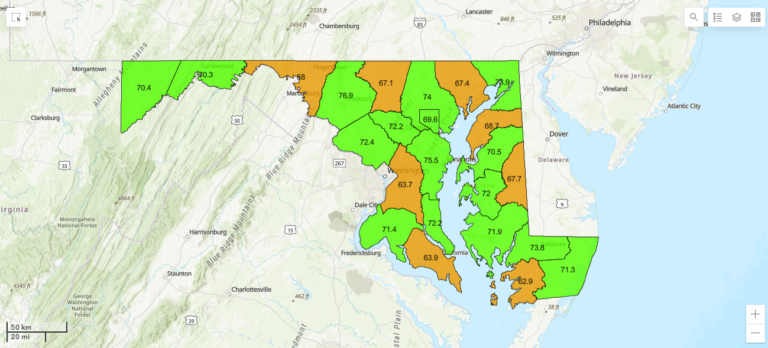The Maintenance Effectiveness Assessment
Beginning with the IAC’s FY 2021 assessments, a revised Maintenance Effectiveness Assessment (MEA) was implemented. This updated MEA streamlines the evaluated components and expands its scope to include additional areas of Maintenance Management, such as Preventive Maintenance and the use of Computerized Maintenance Management Systems (CMMS).
Due to these changes, MEA results from FY 2021 onward are not directly comparable to assessments conducted in FY 2020 and prior. Along with the revised assessment structure, the IAC recalibrated its rating categories of Superior, Good, Adequate, Not Adequate, and Poor to better align with industry standards and to more accurately reflect how maintenance practices influence a facility’s lifespan.
Under the current MEA framework, a rating of “Adequate” (70%–79%) indicates that a facility is being maintained at a level that will allow it to reach its expected lifespan. It is important to note that many facilities previously rated as “Good” may now fall within the “Adequate” range under the revised system. This shift does not indicate a decline in performance, but rather reflects the updated standards and more detailed review process now in place.
To learn more information about the new MEA, please view the recorded August 20, 2020 IAC meeting beginning at the 4:00 mark in the recording and view the IAC’s presentation material beginning at Page 76.
The FY 2024 Annual Maintenance Report
MEA Rating State Map
This web map application displays Maintenance Effectiveness Assessments throughout the state for fiscal years 2021, 2022, 2023, and 2024.
Weighting Categories
The MEA evaluates school facility maintenance through a comprehensive framework that includes 18 facility-component categories (such as roofing, HVAC, and flooring) and 2 maintenance management categories (such as preventive maintenance and use of a Computerized Maintenance Management System).
Each category is assigned a specific weight based on its relative importance to the overall performance and expected lifespan of the facility, aligned with industry standards.
During the assessment process, categories may receive findings identified as minor or major deficiencies. These findings impact the preliminary score. However, Local Education Agencies (LEAs) have an opportunity to correct these deficiencies and submit documentation before the assessment is finalized. If remediation is verified, the category’s score—and the facility’s overall rating—can be updated accordingly.
LEAs have 15 days to notify the IAC of an intention to correct the deficiency and 45 days to provide proof that the deficiency has been corrected or that a correction is in progress. Upon receipt of this, the assessment report is updated and finalized.
Minor deficiencies result in a category reduction rating of -34% and pose a potential threat to life, safety or health of occupants; delivery of educational programs or services; or the expected life span of the facility.
Major deficiencies result in a category reduction rating of -100% and pose an immediate threat to life, safety or health of occupants; delivery of educational programs or services; or the expected life span of the facility.
Result Categories
The MEA results in one of five possible ratings: superior, good, adequate, not adequate, or poor. Facilities in the adequate category are maintained sufficiently to achieve the life of each system within the facility.
MEA Deficiency Removal Guidelines
Good and Superior: Maintenance is likely to extend the life of systems within the facility beyond expected.
Adequate: Maintenance is sufficient to achieve the life of each system within the facility and, with appropriate capital spending and renewal, the total expected facility lifespan.
Not Adequate and Poor: Maintenance is insufficient to achieve the expected life cycle of systems within the facility.
MEA rubric and scoring calculator effective as of July 1, 2022.
MEA rubric and scoring calculator effective prior to July 1, 2022.
Preventive-Maintenance Task List
The Preventive-Maintenance Task List is provided to assist LEAs with implementing an effective preventive-maintenance (PM) plan.
Reference Guide for the MEA
The Maintenance Effectiveness Reference Guide provides a general overview of the 18 categories that are assessed during the Maintenance Effectiveness Assessment. Each category includes the Maintenance Effectiveness Rating Rubric and photographic examples for reference.
Work Order Template
This template is to be used by LEAs to provide pre-assessment data to the IAC’s Assessors.


